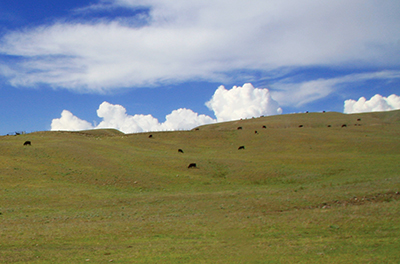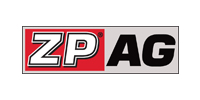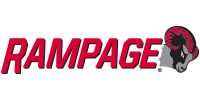 RESTRICTED USE PESTICIDE
RESTRICTED USE PESTICIDE
Due to Hazards to Non-target Species
For retail sale to and use only by Certified Applicators or persons under their direct supervision and only for those uses covered by the Certified Applicator’s certification.
The text below is for informational purposes only. It is meant to provide an overview of the target pests and applications for our ZP AG line of products. Always consult the product label for specific instructions for use, and always follow the use restrictions and limitation guidelines.

California Ground Squirrels
- Product: PCQ Ag Pelleted Bait
- BAIT STATIONS:
- Product must be used in a secured, tamper-resistant bait station at the following sites: rangeland and pastures; noncrop borders of the listed use sites as follows: outside of fence rows, rights-of-way, canal banks, ditch banks, highways, levees, railroad lines, utilities. It may also be used in and around man-made structures such as agricultural buildings (but not inside of pens), homes, other permanent or temporary structures;
- SPOT BAITING:
- Product may also be applied by spot baiting applications at the sites listed above
Do not graze livestock or plant food or feed crops in spot-treated areas while bait is present.

Rangeland, Pastures, & Adjacent Noncrop Areas
- KANGAROO RATS
- Product: ZP AG Pellets & Short Pellets
- USE RESTRICTIONS:This product may only be used to control Ord’s kangaroo rat (Dipodomys ordii), Banner-tailed kangaroo rat (D. spectabilis) and Merriam’s kangaroo rat (D. merriami) in rangeland, pastures and adjacent noncrop areas.
- BAITING: Place one tablespoon (12 grams) of bait at 2 locations on opposite sides of mounds in feeding runs within 3 ft of active burrow entrances.
- Product: ZP AG Oats & Squirrel Oats
- USE RESTRICTIONS: For control of the Ord’s kangaroo rats (Dipodomys ordii), banner-tailed kangaroo rats (D. spectabilis), and Merriam’s kangaroo rats (D. merriami) in rangeland vegetation and noncrop areas. Do not apply this product within the occupied habitats of threatened or endangered species or subspecies of kangaroo rats.
- HAND BAITING: Place one tablespoon (12 grams) of bait at 2 locations in feeding runs near the entrances to kangaroo rat burrows.
- Product: ZP AG Pellets & Short Pellets
- GROUND SQUIRRELS
- Product: ZP AG Pellets & Short Pellets
- USE RESTRICTIONS: For control of California ground squirrels (Spermophilus beecheyi) and Richardson’s ground squirrels (S. richardii) in rangeland, pastures and adjacent noncrop areas. Product must not be applied on roads, near residential areas, over water or where plants are grown for food or feed.
- PREBAITING (Mandatory): Prebait with a 50/50 mixture of ground corn and wheat to enhance bait acceptance by California and Richardson’s ground squirrels. Apply the prebait mixture at 6 lbs per acre 2-3 days prior to using ZP AG Pellets.
- BAITING: Treat only once during treatment period. Broadcast bait in a 10-15 foot swath using hand or ground-driven dispensing devices not to exceed 6 lbs per acre (0.12 lb ai/A) Dispose of excess bait from application equipment by burial.
- Product: ZP AG Pellets & Short Pellets
- PRAIRIE DOGS
- Product: ZP AG Oats & Squirrel Oats
- USE RESTRICTIONS: For control of black-tailed prairie dogs (Cynomys ludovicianus), white-tailed prairie dogs (C. leucurus) and Gunnison (Zuni) prairie dogs on rangeland in the western United States (North Dakota, South Dakota, Nebraska, Kansas, Oklahoma, Texas, New Mexico, Arizona, Colorado, Montana, Idaho, Utah and Wyoming).
- PREBAITING: Prebait with 4 grams (one teaspoon) of untreated steam crimped oats per mound, one or two days prior to baiting, to increase acceptance of treated baits by prairie dogs.
- BAITING: Apply bait only after all or most of prebait is eaten and only to areas where untreated bait was consumed. Establish observation period during prebaiting. Apply bait by hand as a six-inch bait spot on edge of each mound or in adjacent feeding areas. Application rate should not exceed 4 grams (one teaspoon) per bait spot. Treat during mid-summer through mid-winter period (July-January). Do not apply more than one bait application during this period. Dispose of spilled or unwanted bait by burial.
- Product: ZP AG Oats & Squirrel Oats
Cropland, Rangeland, and Noncrop Areas
- Product: ZP AG Oats & Squirrel Oats
- USE RESTRICTIONS: For control of plains pocket gophers (Geomys bursarius), southeastern pocket gophers (G. pinetis), yellow-faced pocket gophers (Pappogeomys castanops) and pocket gophers (Thomomys spp.) in cropland (including alfalfa), rangeland, reforestation areas, Christmas trees, conifer/poplar/cottonwood plantations and noncrop areas (including lawns, golf courses and parks). Bait must be applied directly into pocket gopher's underground burrow systems or into underground tunnels created by burrow-builder machines. Do not apply bait above ground or directly to crops grown for food or feed. Do not apply by use of burrow-builders in lawns, golf courses, or municipal parks.
- HAND BAITING:Follow the directions indicated below to locate and treat pocket gophers’ burrow systems.
Locating Underground Runways: Use a specially designed gopher probe, a metal rod, a strong smooth stick, or other suitable implement to probe the ground 10 to 15 inches away from fan-shaped gopher mounds. Begin probing on the flat side of the fan. When the main runway has been entered, the probe will drop about 2 inches due to decreased resistance from soil.
Applying Bait to Runways: Using a long-handled spoon or mechanical probe, drop one teaspoon (4 grams) of bait into the main runway at each baited point. Cover the opening with sod, a rock, or soil to exclude light. Take care not to cover bait with soil. Depending upon mound density, make two to five bait placements per burrow system. Recover and bury all spilled bait. Applied in this manner, one pound of bait will treat one to eight acres, depending upon the number of pocket gopher burrow systems present. - BURROW BUILDER: Follow manufacturer’s instructions for the type of equipment used. Calibrate equipment to drop a teaspoon quantity (4 grams) of bait at 4-5 foot intervals in the artificial burrow made by the machine. Apply at a rate of 2-3 lbs. of bait per acre. Pick up and bury all spilled bait.




